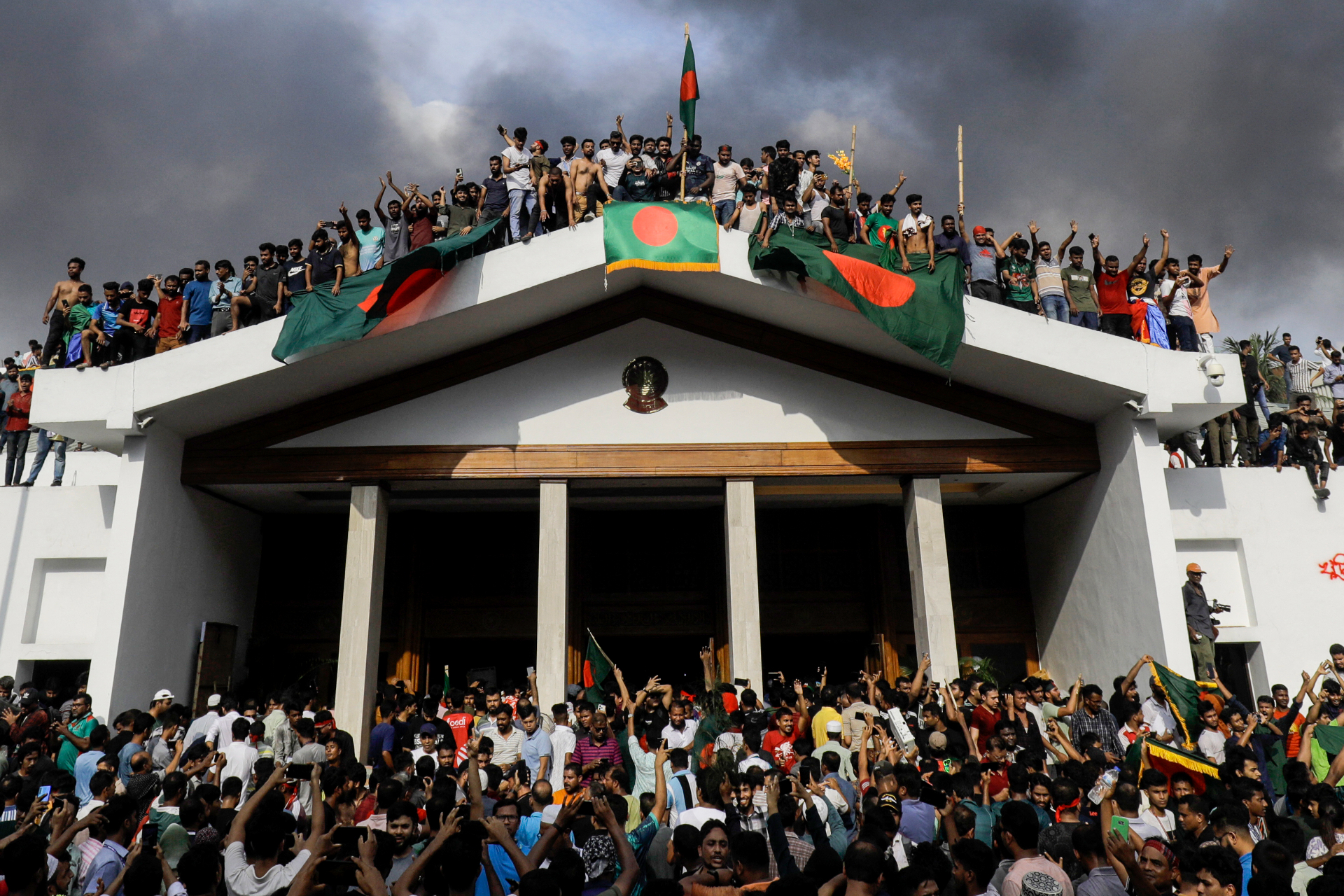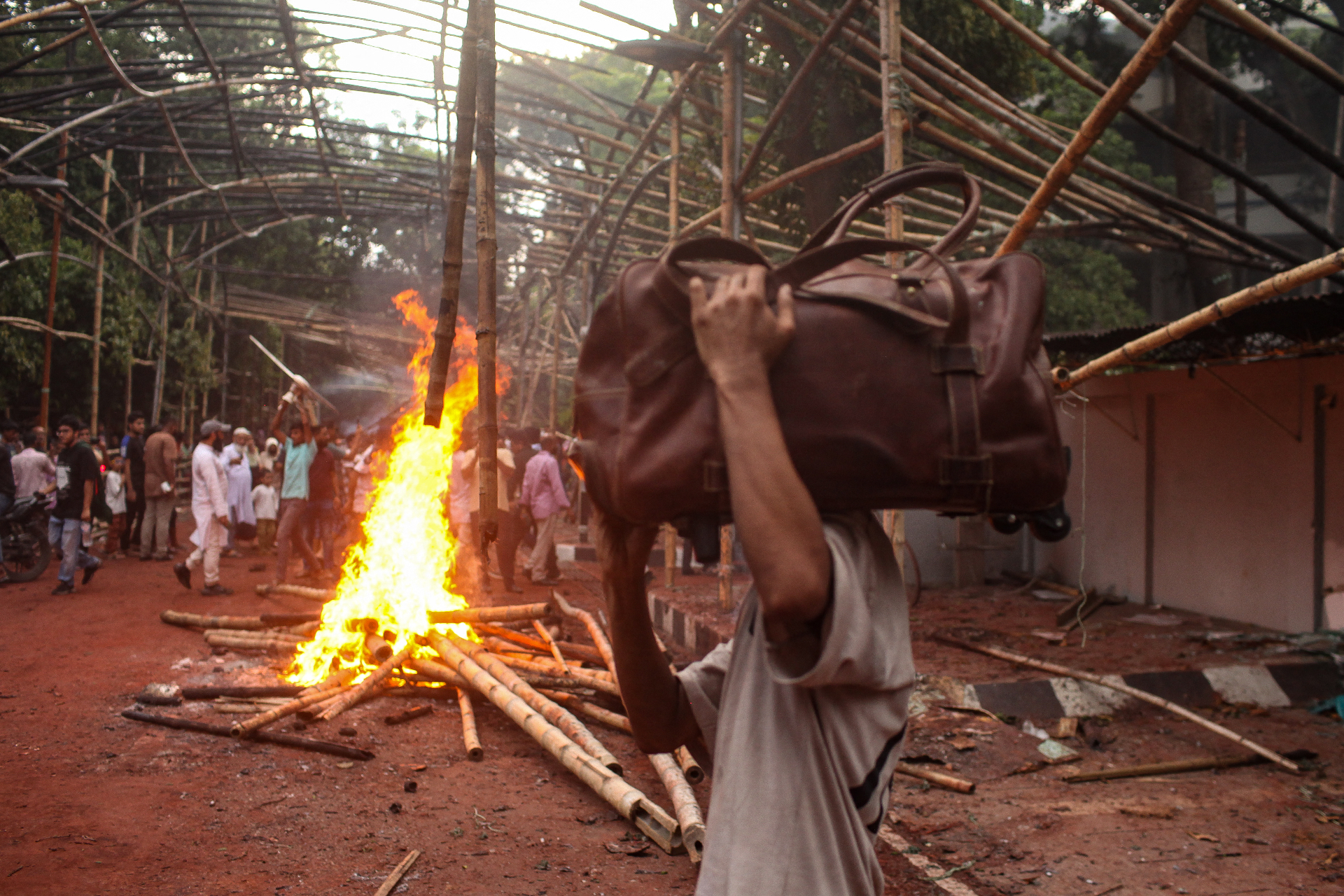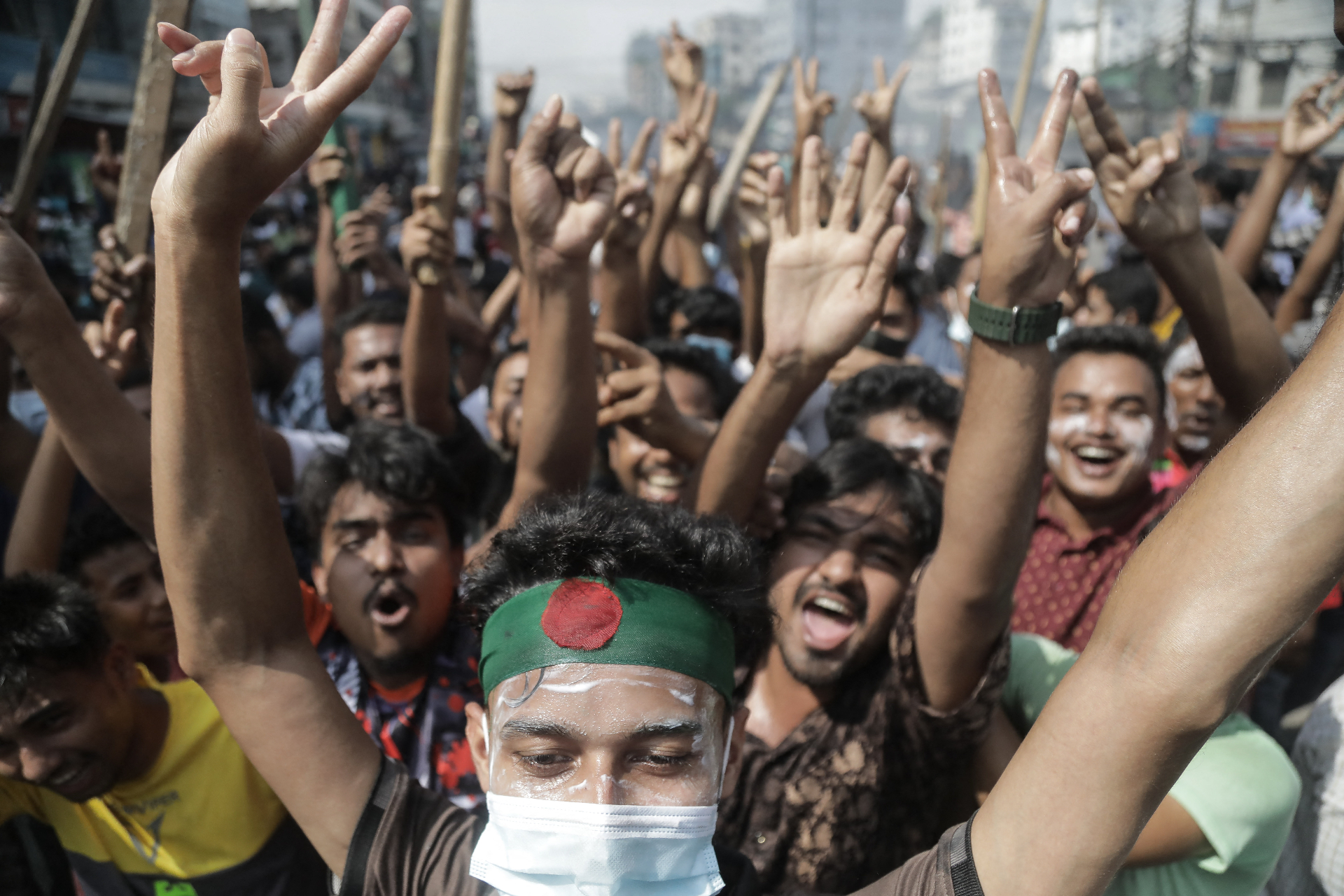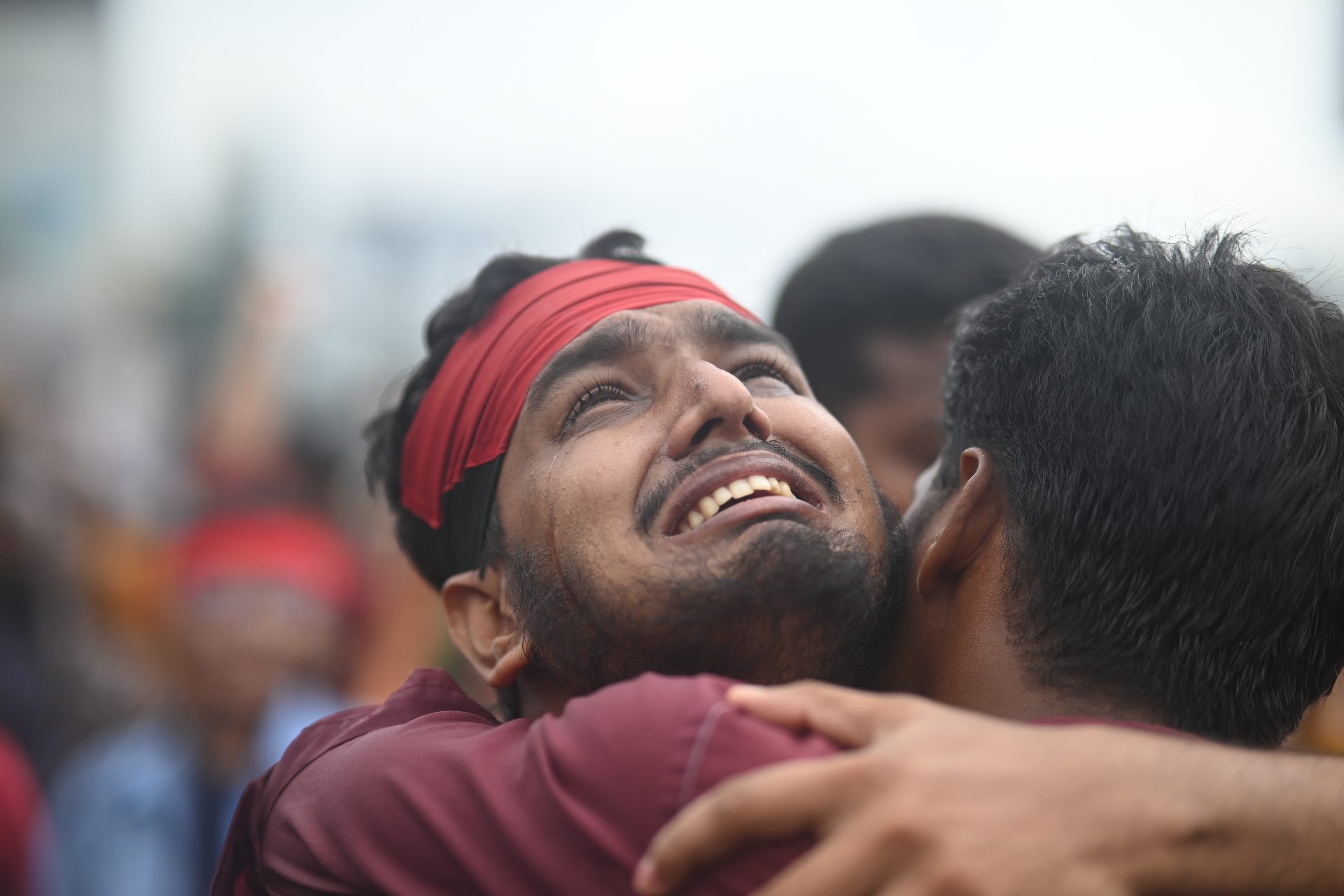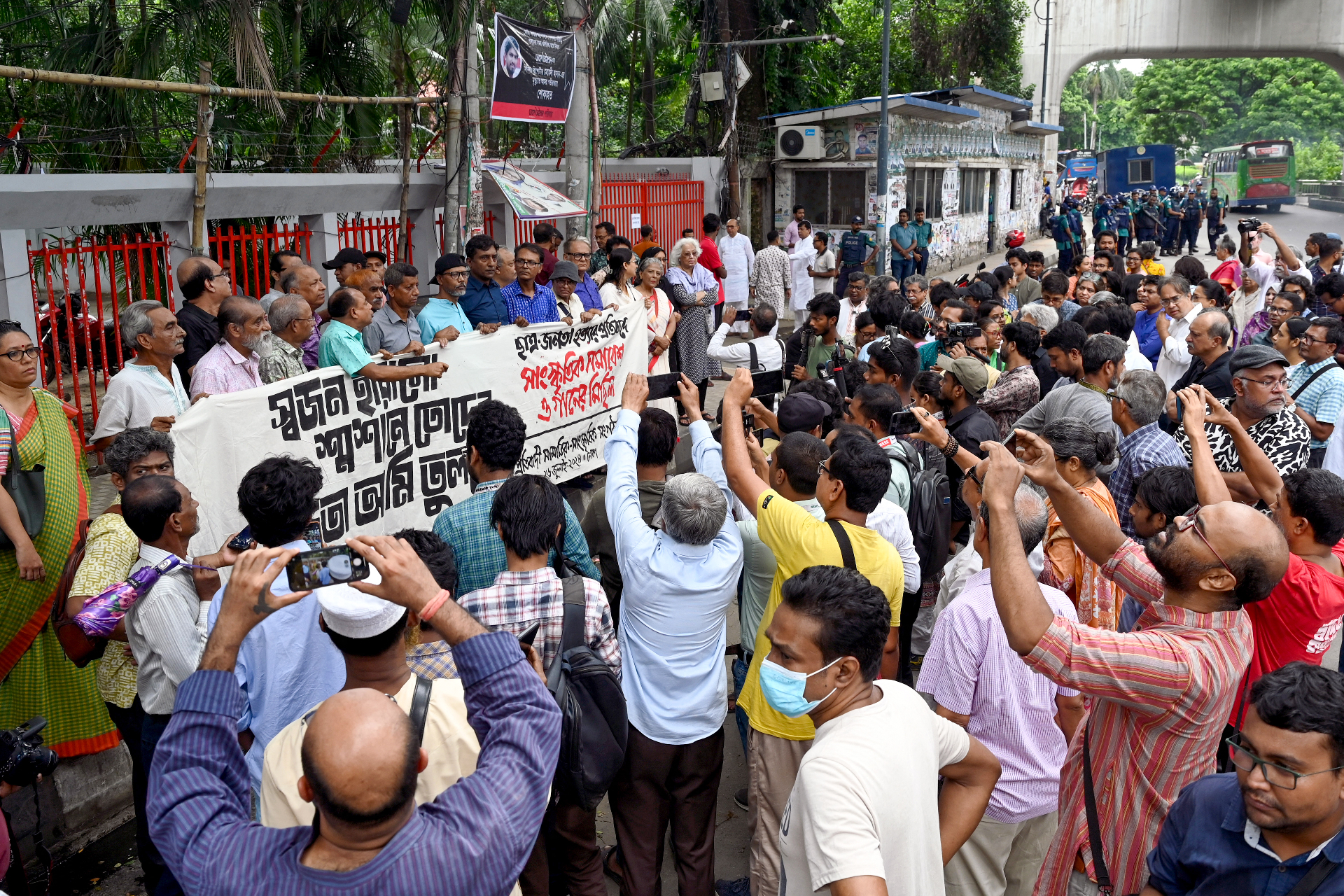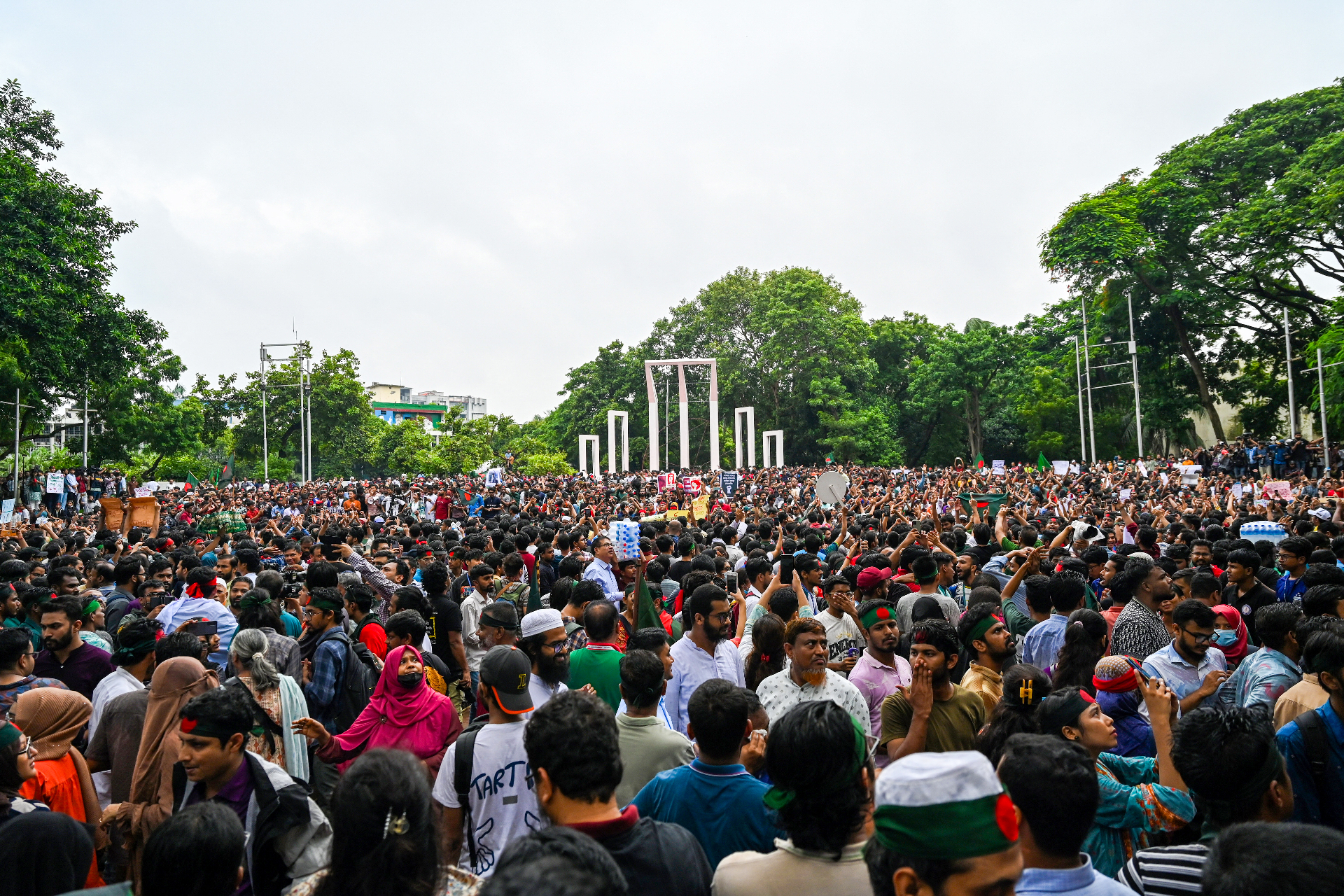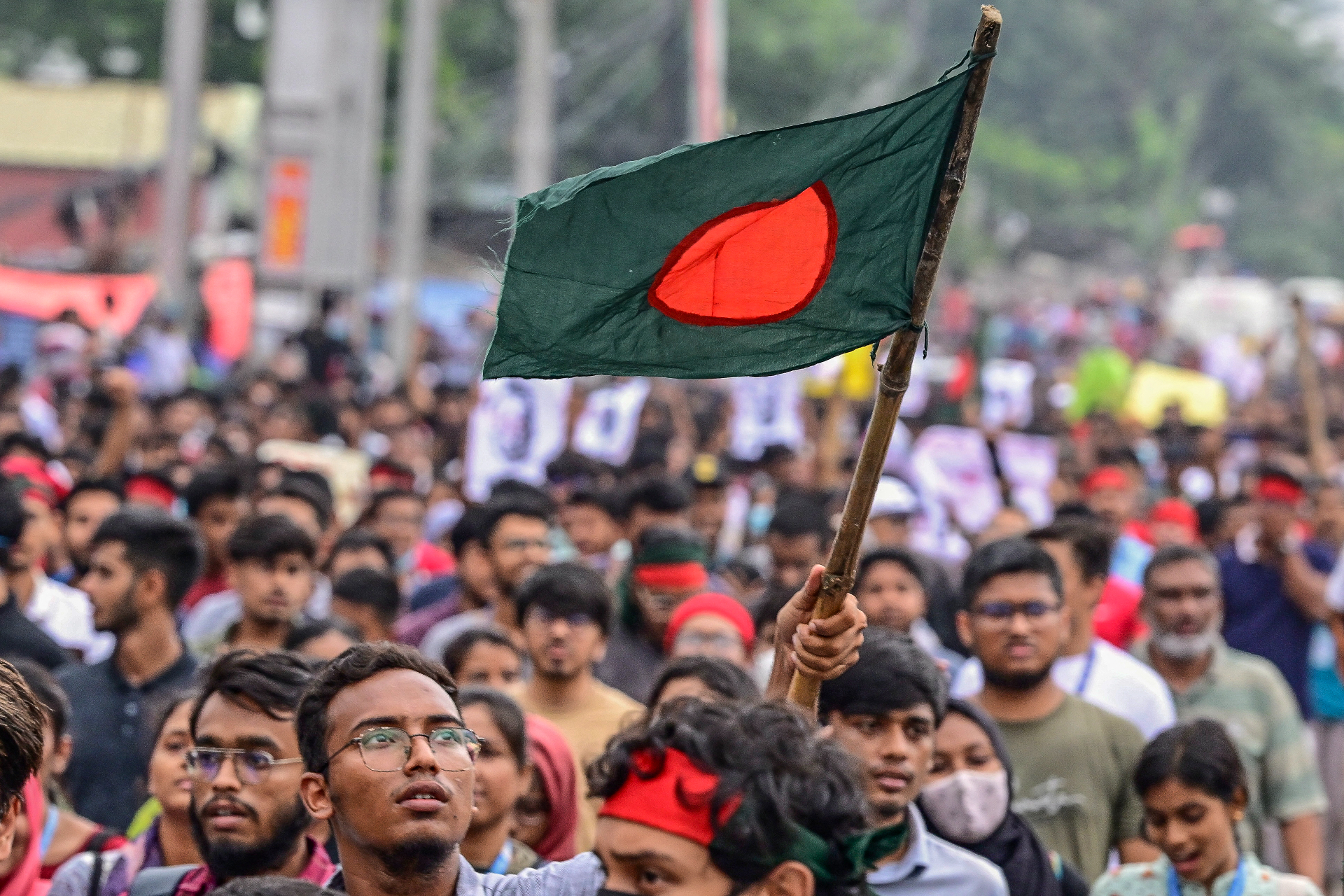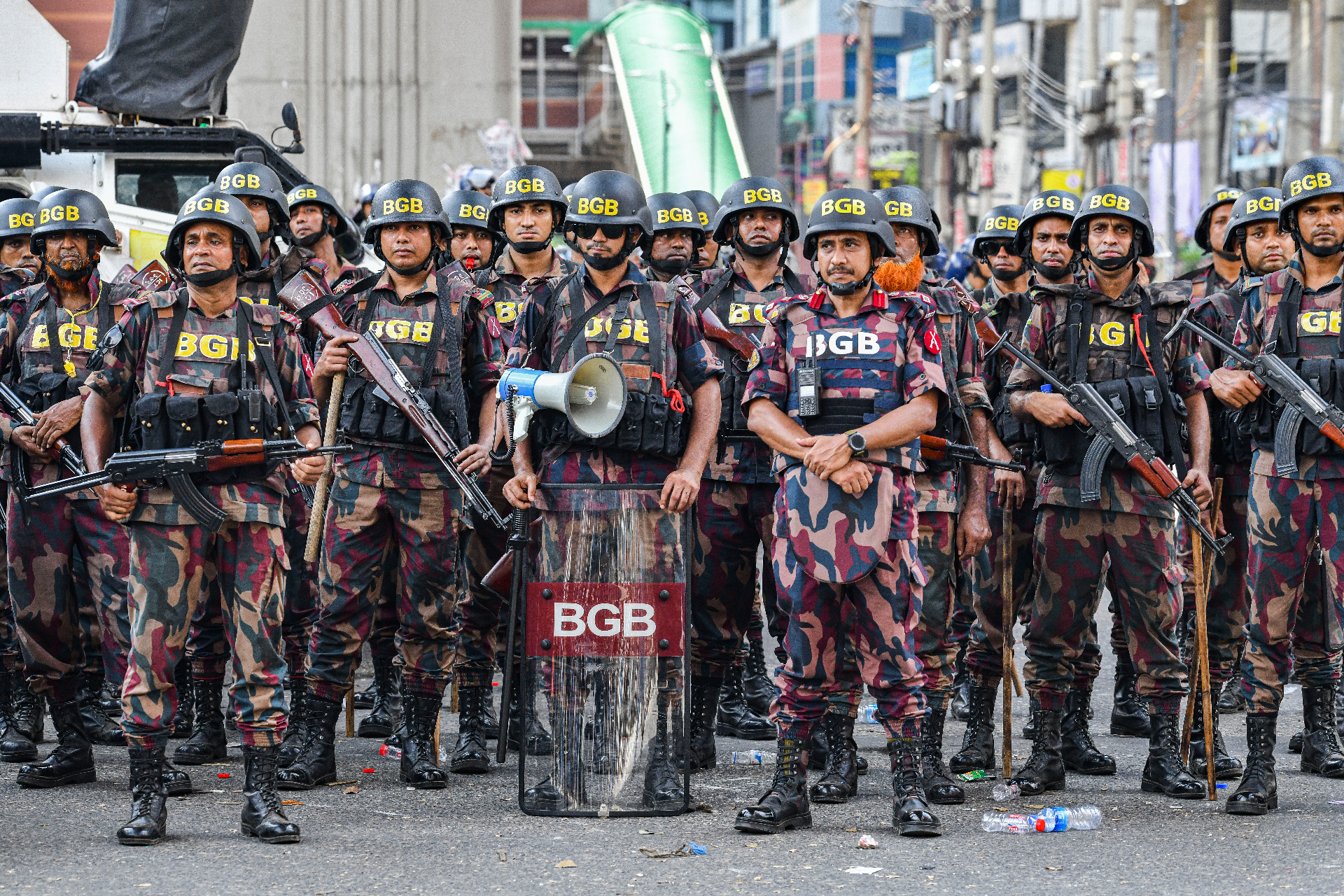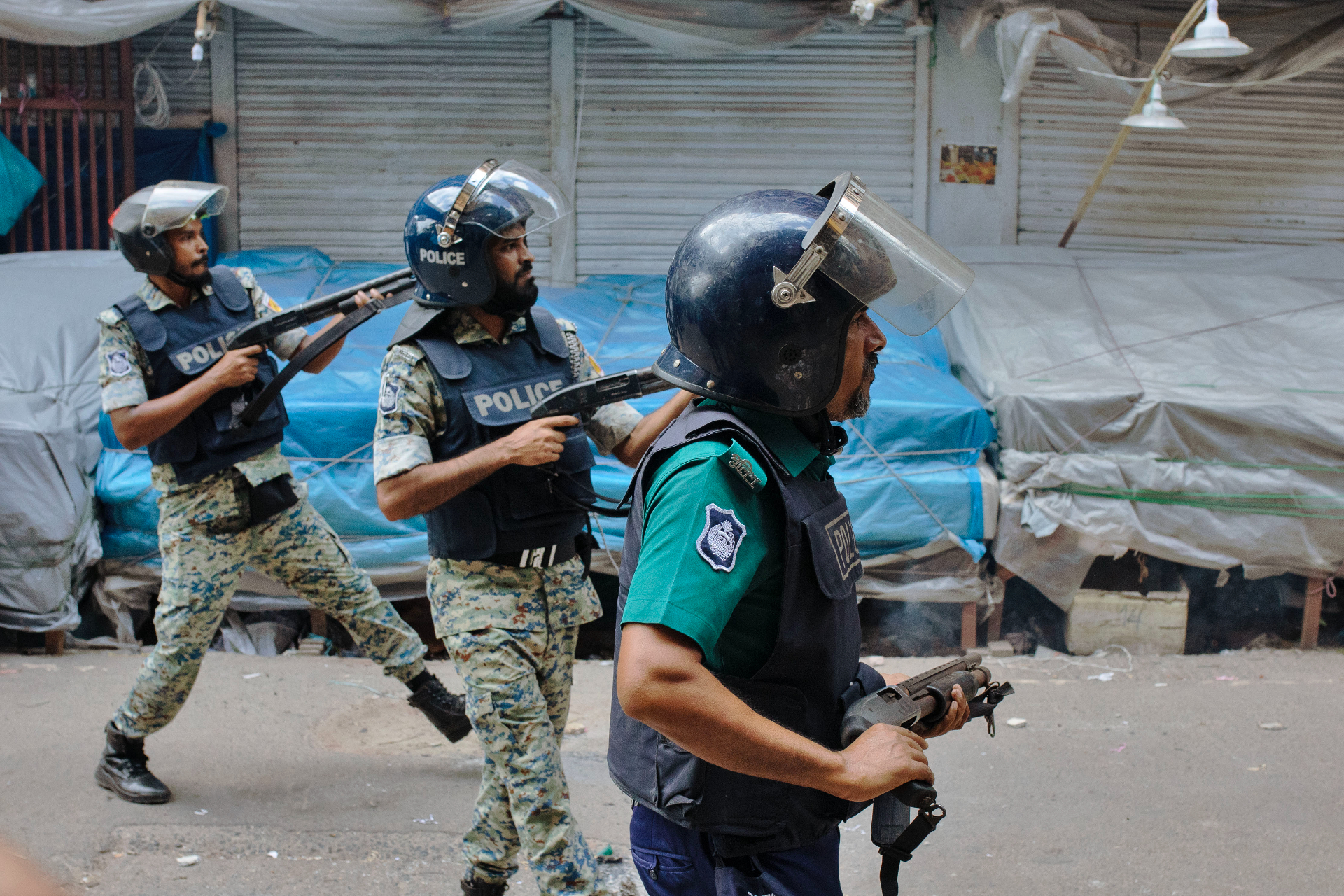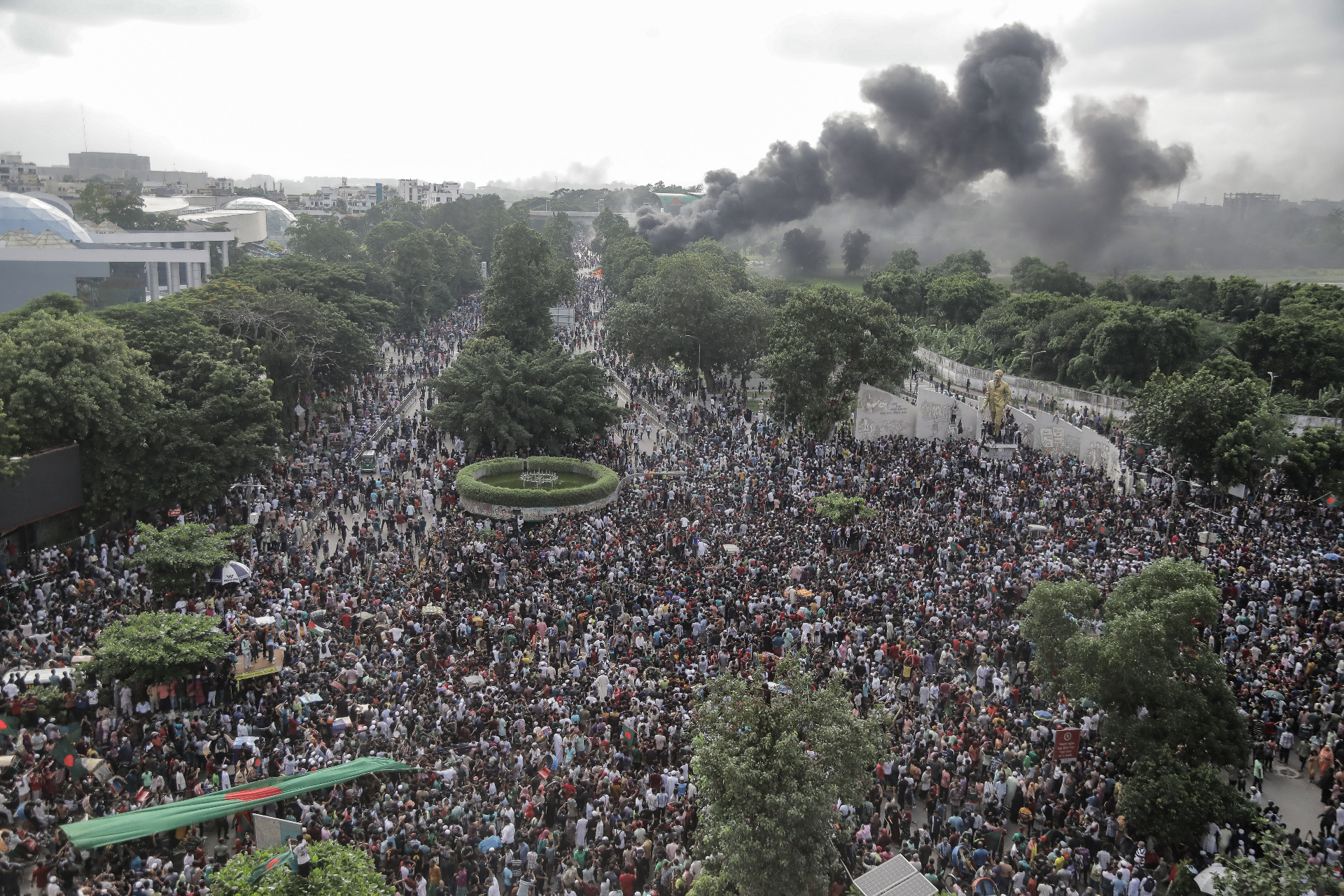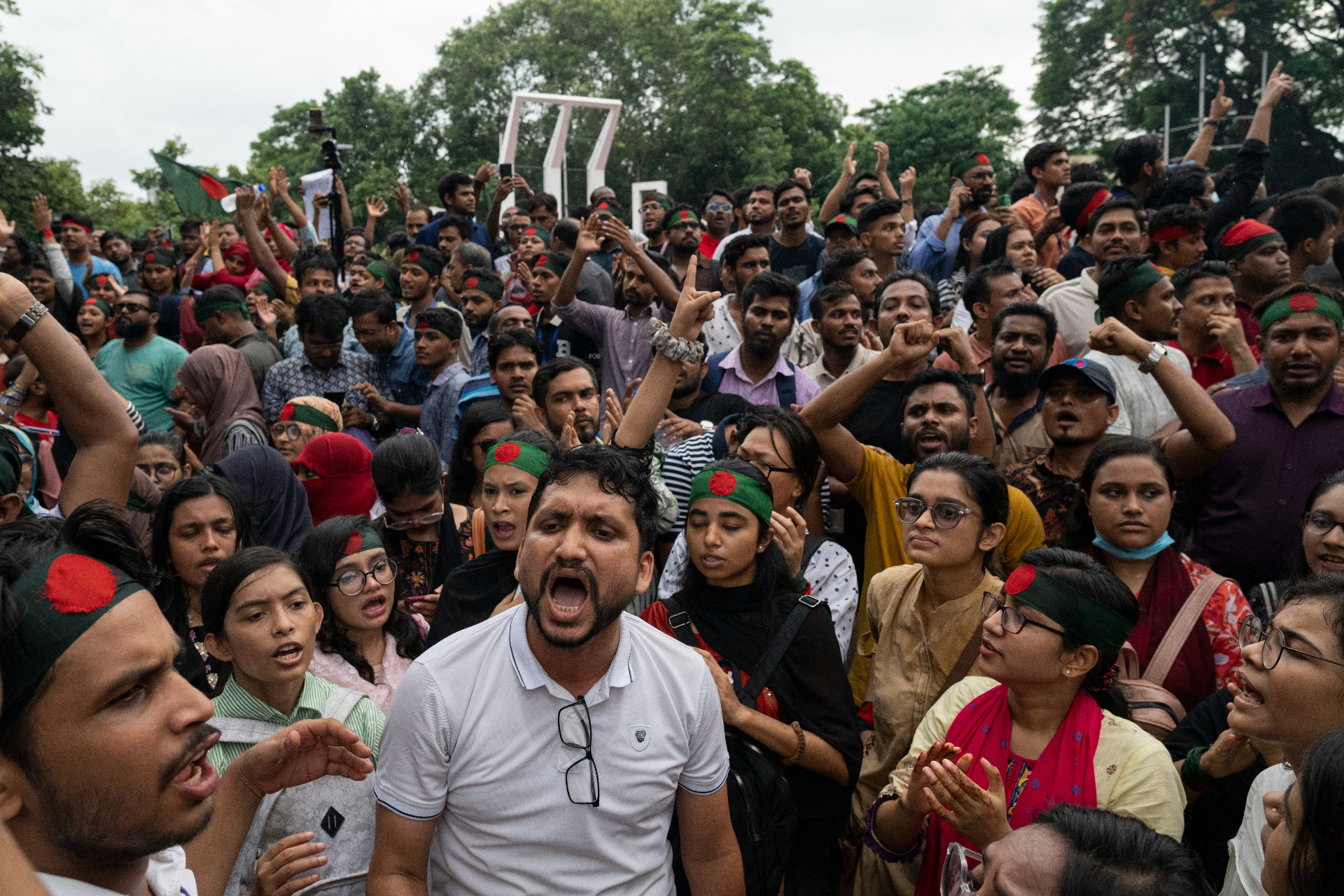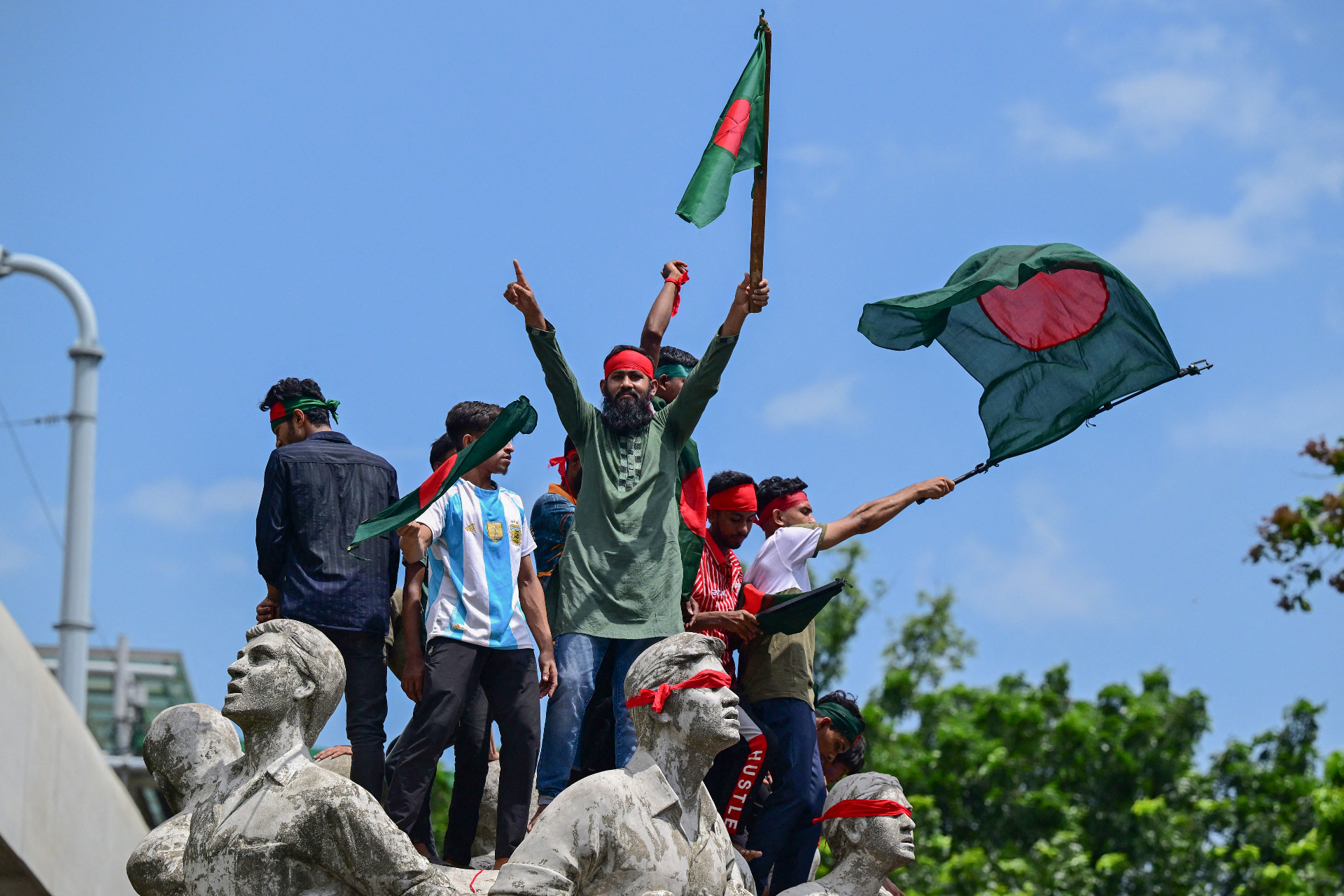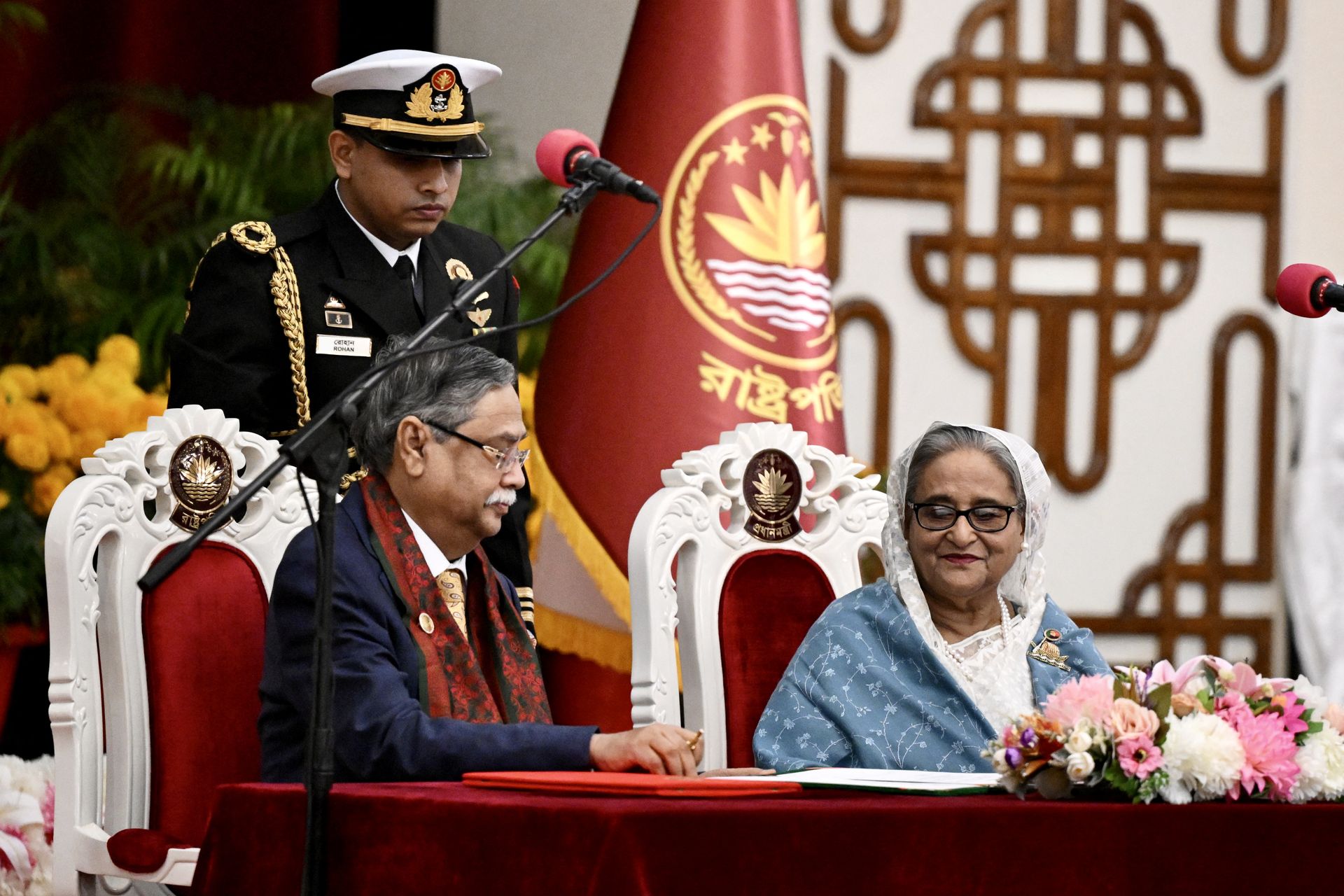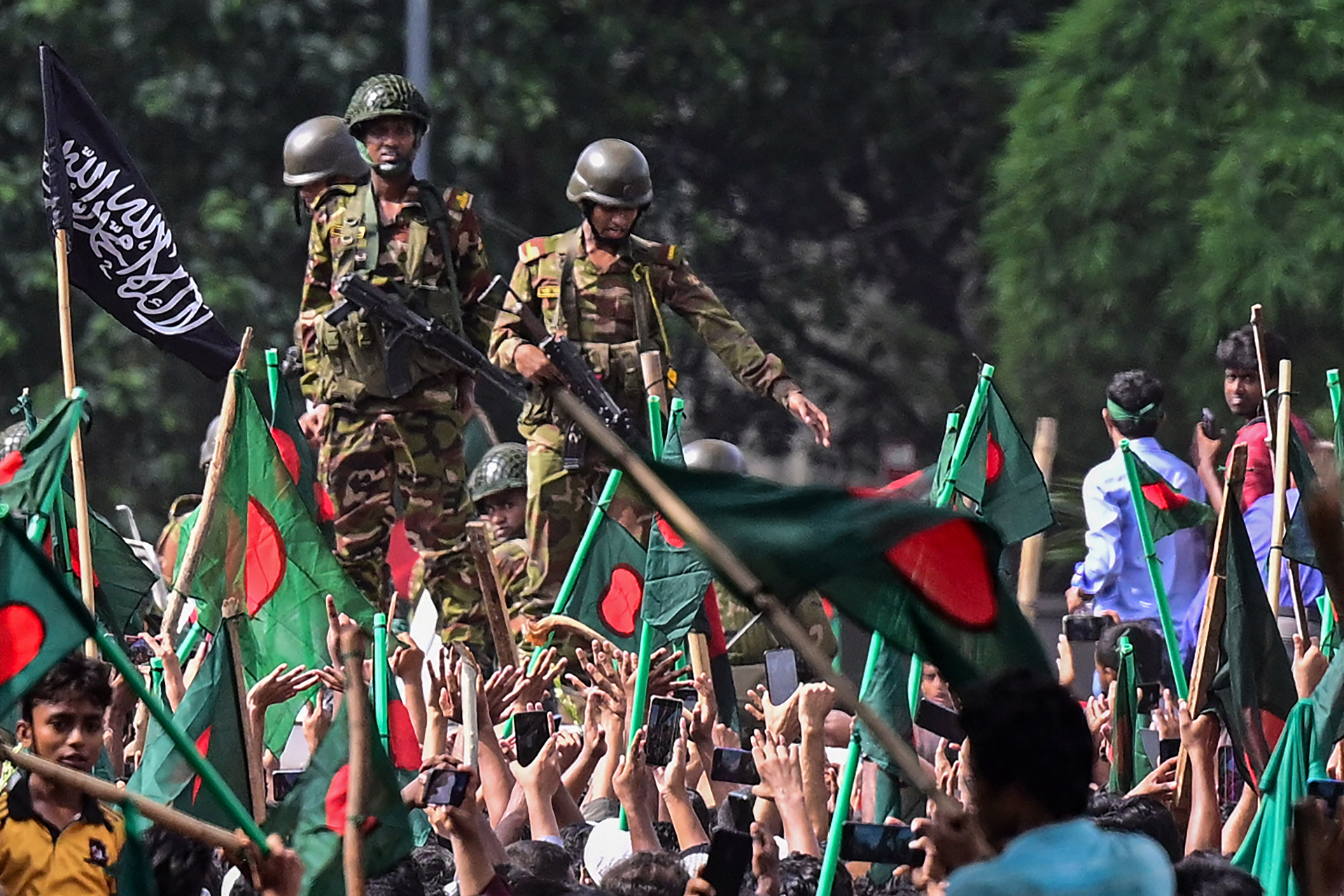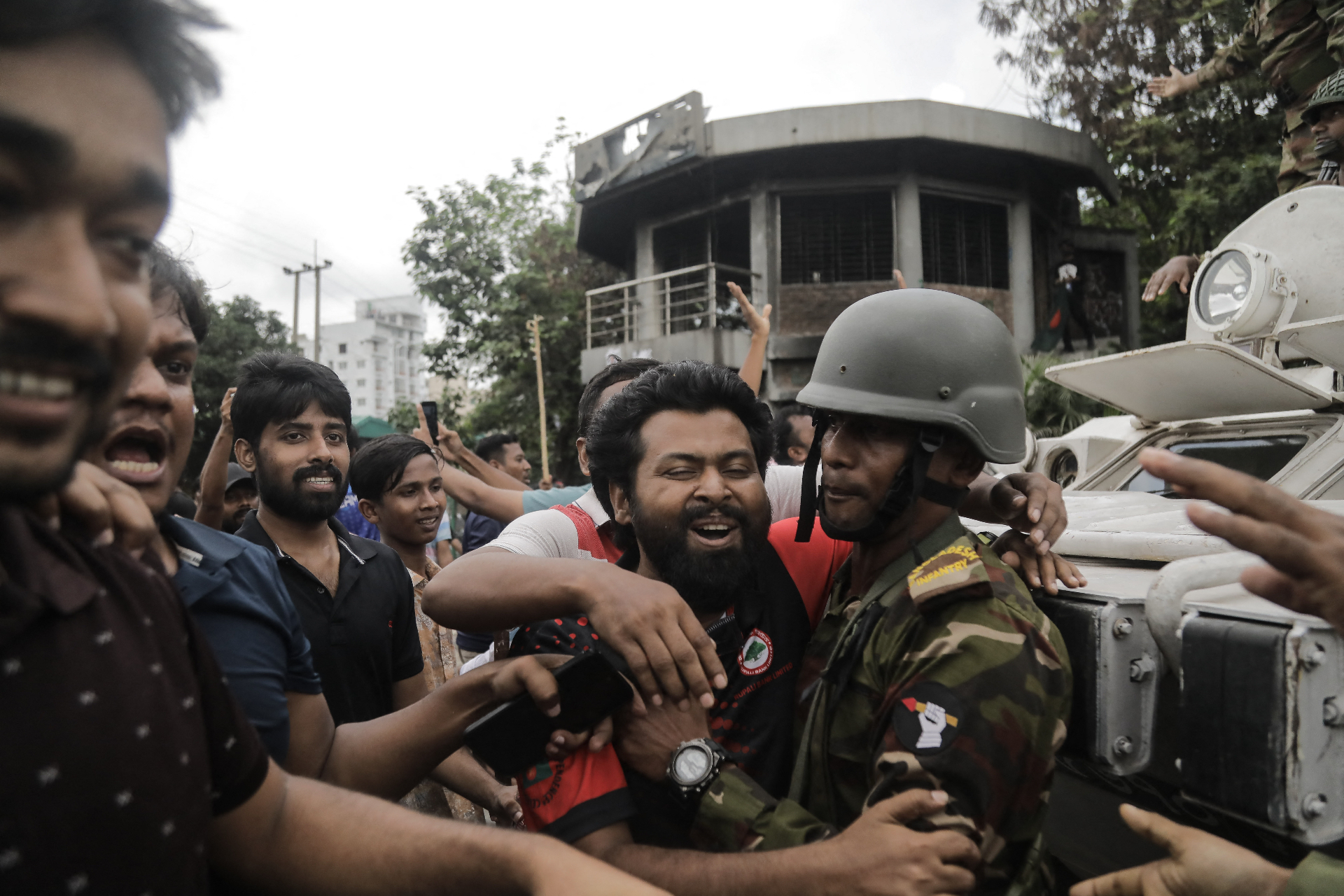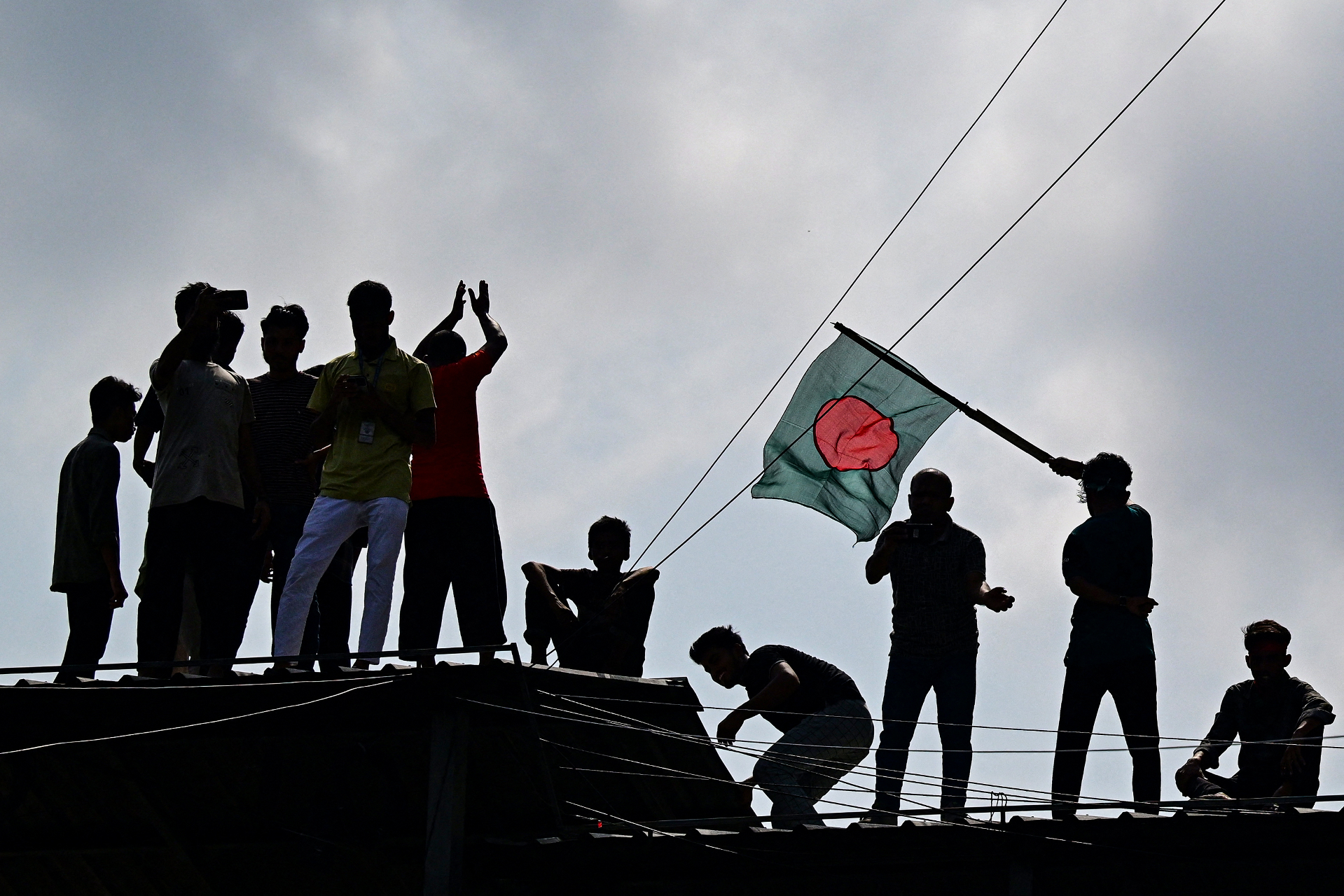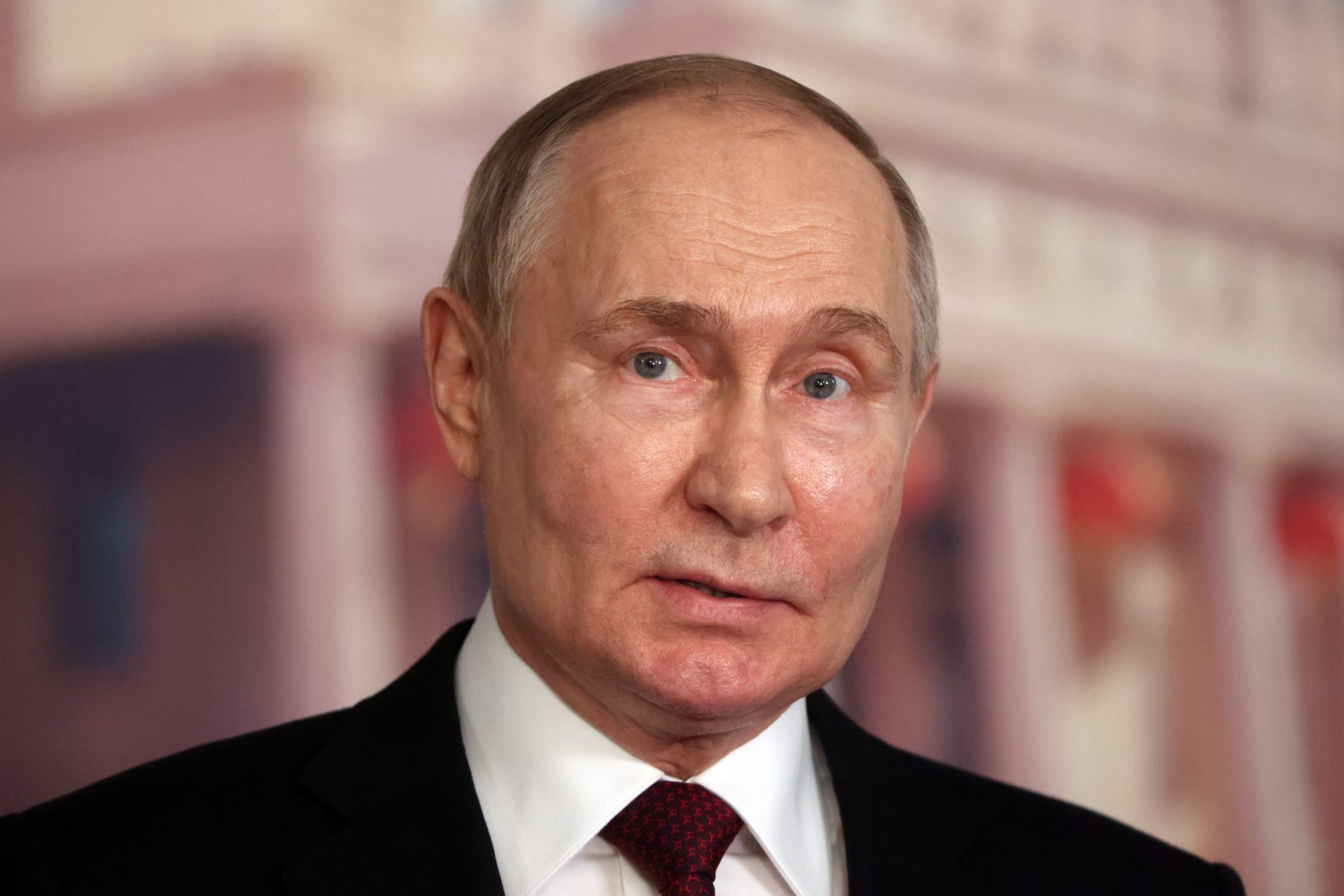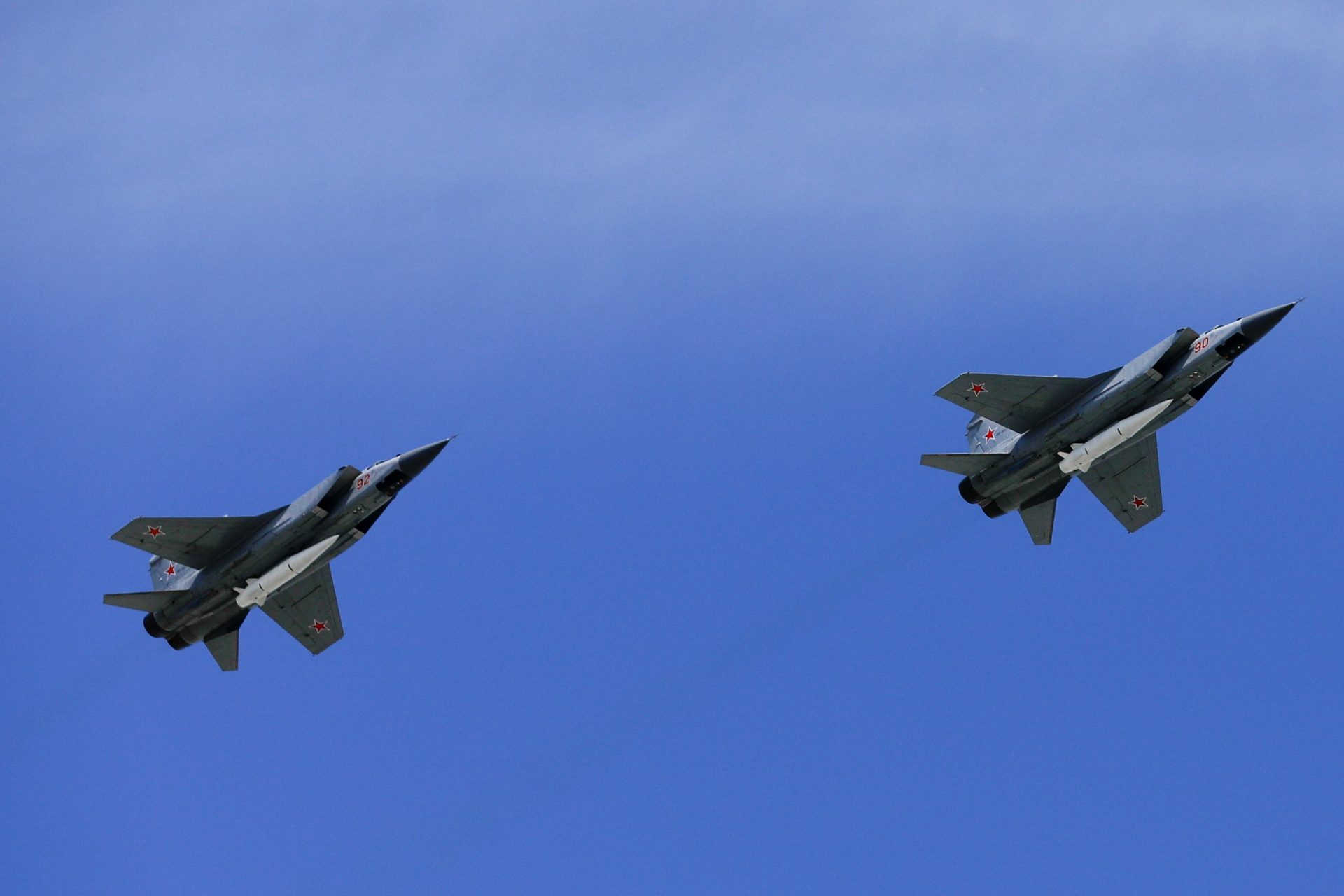Bangladesh's 15-year ruler flees the country after weeks of deadly protests
The Prime Minister of Bangladesh, Sheikh Hasina, resigned and fled the country. At the same time, protesters stormed her residence following weeks of widespread deadly demonstrations.
The military announced that Hasina had resigned and said it would form an interim government. According to The NY Times, the army chief, Gen. Waker-uz-Zaman, made the statement.
The political debacle followed weeks of widespread protests against Hasina's leadership. The demonstrations started peacefully but became increasingly violent.
The NY Times and CNN place the death toll of the protests on over 200 people. According to UNICEF, at least 70 children have died in the demonstrations.
The demonstrations started weeks before. Students from the University of Dhaka (the capital) took to the streets to request a change in the system to assign government jobs.
Right now, the system in Bangladesh has quotas so that certain groups have guaranteed access to half of all government jobs. The NY Times said relatives of the veterans of the independence war against Pakistan are one.
The students demanded a change in the system to guarantee merit-based candidate selections. After protests, the government changed the system in 2018, but the High Court reinstated it.
The demonstrations in Dhaka extended to other cities, led by students of other major universities, CNN reported. They became violent as protesters started clashing with the police and counter-protesters.
As the protests continued, Ms. Hasina deployed the police and paramilitary forces against the demonstrators, dramatically raising the death toll. The former PM also ordered a curfew and internet blackout.
The repression and growing death toll widened the motivation for the protests and rallied other demonstrators behind the students to demand an end to Sheikh Hasina's increasingly authoritarian government.
After the curfew and internet blackout were partially lifted, the NY reported, the protesters reorganized to take the streets, and Ms. Hasina called on government supporters to do the same.
The result was the deadliest day since the start of the protests. According to CNN, 91 people were killed on Sunday, one day before the resignation of the Prime Minister.
According to The NY Times, Ms. Hasina has governed Bangladesh for around 15 years since 2009. She is the daughter of the country's founding leader and oversaw steady economic growth.
However, critics cited by the newspaper also said that the 76-year-old PM had steered the country towards a one-party regime and became intolerant of the opposition.
Now that she is out, the future is not that clear. The army chief said he consulted with representatives of the country's political parties and civil society before his statement.
According to AP News, the military asked the country's president, who serves exclusively as a ceremonial head of state, for guidance on forming the interim government.
Still, according to The NY Times, Ms. Hasina's long rule has divided the nation by empowering supporters and punishing opposition, making it difficult to restore order and heal.
More for you
Top Stories



